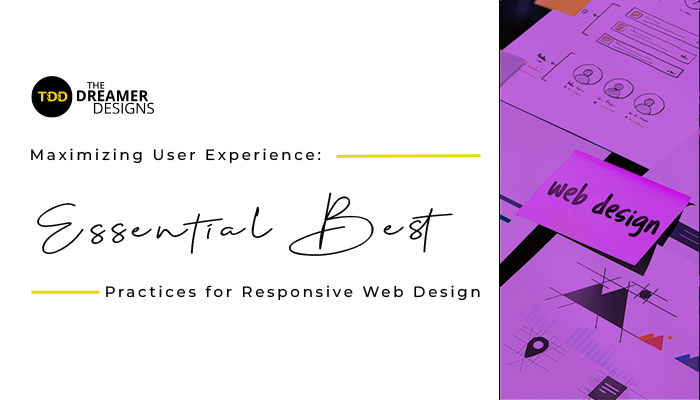Have you noticed how more and more people are using their mobile devices to access the internet? It’s becoming increasingly important for websites to be easily accessible and usable on all devices, from desktops to smartphones. This is where The Dreamer Design’s responsive web design comes in.
Our Responsive web design (RWD) is a technique of designing and developing websites that respond to different screen sizes and devices, ensuring optimal viewing and interaction experience for users. Here are some best practices for RWD we practice at The Dreamer Design :
1. Use Flexible Grid-Based Layouts:
By using grid-based layouts, we create a flexible and responsive design that adjusts to different screen sizes. Here we get a chance to set up columns and rows and arrange our content blocks within the grid to create a flexible layout.
2. Make Use of Media Queries:
Media queries give us a priority to target specific devices and screen sizes and apply different styles to them. At The Dreamer Design, we use media queries to adjust the layout and design elements based on the screen size and orientation.
3. Optimize Images:
Large images can slow down your website, so optimizing them for different devices is important. With 60+ combined years of experience, we have designers that seamlessly use appropriate image sizes and compression to ensure images load quickly on all devices.
4. Prioritize Content:
When designing for different screen sizes, it’s important to prioritize the content that’s most important to our users. This way, our team ensures that the main message and purpose of the website are clear and accessible, no matter the device.
5. Test on Multiple Devices:
It’s important to test the website on multiple devices to ensure it’s responsive and works well on all screens. How do we do? Use online tools to simulate different devices or physically test on actual devices to see how our website looks and functions.
Conclusion:
And there you have it! These are the best practices for responsive web design to help you create a website that is accessible and usable on all devices. It’s important to remember that responsive web design is not a one-time task but an ongoing process. As new devices and screen sizes emerge, The Dreamer Design continuously evaluates and updates your website to ensure it remains responsive.
But don’t let that discourage you! With our right tools, techniques, and best practices, creating a responsive website can be enjoyable and rewarding.






